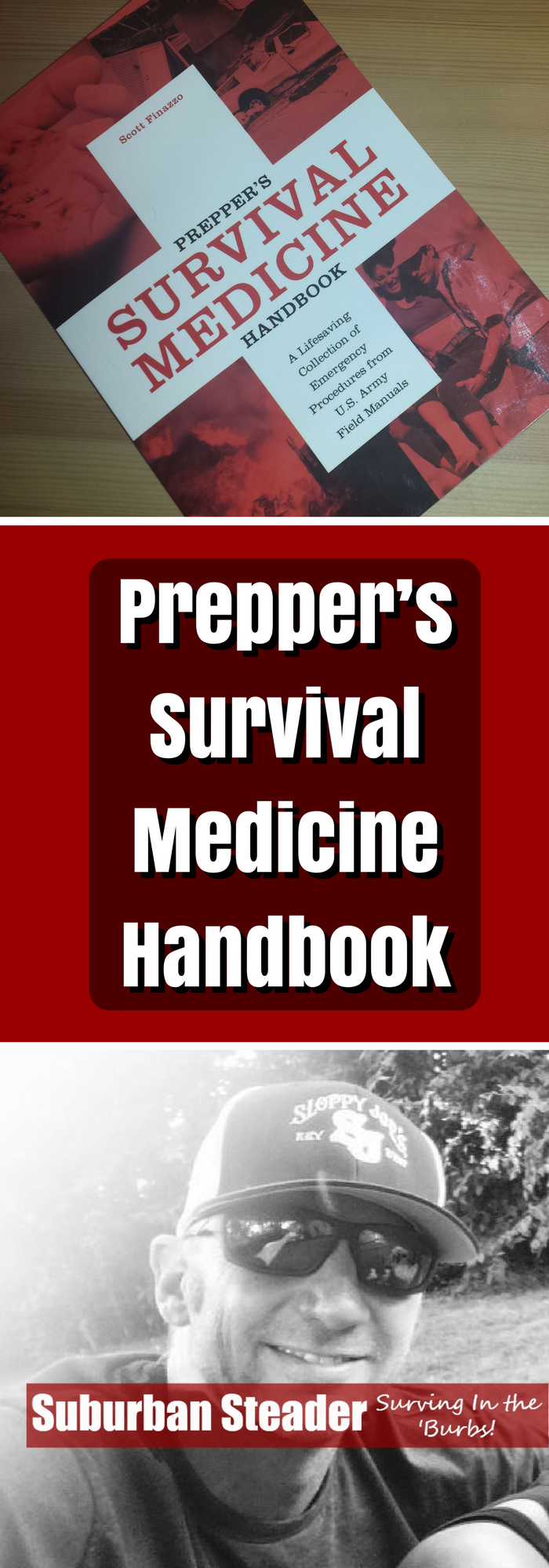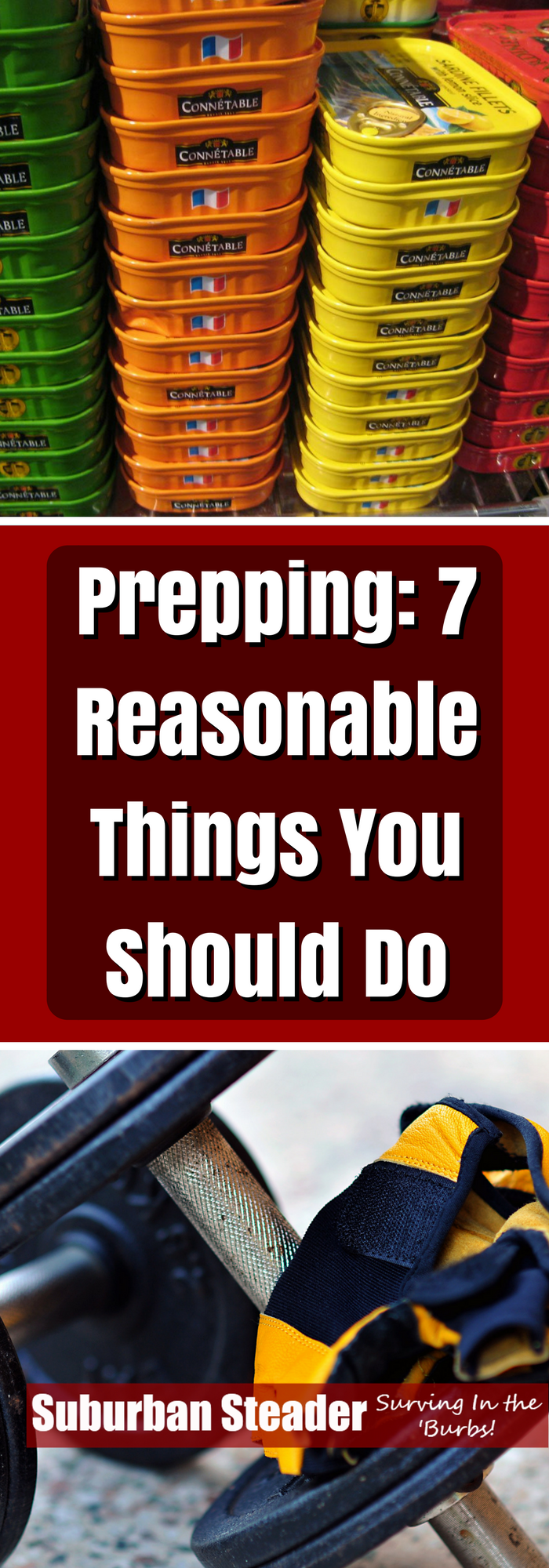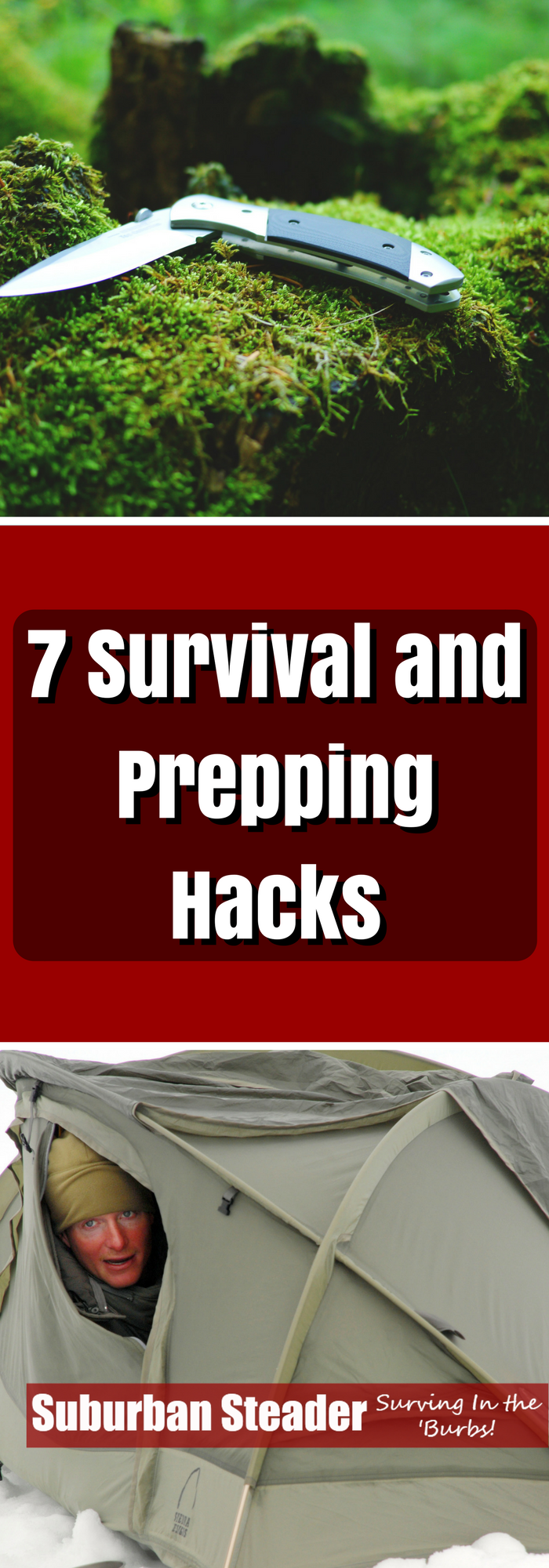Prepper’s Survival Medicine Handbook (Book Review)
You’re a suburban homesteader. You know how to raise your own food, protect your land, hunt for your protein, fix just about everything around your home and work with your neighbors to make your world that much better. But, do you know how to deal with any acute medical emergencies that show up? Scott Finazzo’s book Prepper’s Survival Medicine Handbook will help you not only identify medical issues, but also treat them to the point where you can get them to higher-end medical care.
Book Set-Up
Survival medicine is a broad topic as you might image. Scott Finazzo breaks down this immense topic into sixteen segments that, while still large, make the overall topic a bit more digestible. This breakdown allows for quicker reference which will be important when seconds count.
The chapters of this book are as follows:
Introduction
The Introduction is just that – an introduction to the book and a general reasoning behind why Scott wrote this book. His time as a firefighter and the research he did into military medical response are leveraged heavily in the advice provided in the following chapters.
Chapter 1 – Basic Procedures
Sometimes the best place to start is the beginning. This chapter speaks highly of understanding your situation, working towards a positive outcome and being prepared to take care of things when they go south. Gear – protective clothing, first aid supplies, and the like – is discussed as are certifications and classes that individuals may want to take part in. I was especially interested in the section on smartphone apps that may be helpful.
Chapter 2 – Controlling Blood Loss
This chapter is the first in a long line of “meat and potato” chapters with actionable advice. As you might imagine, topics such as direct pressure, elevation, tourniquets and clotting agents are addressed.
Chapter 3 – Trauma
Trauma is a big word and encompasses a few major different types of injuries. Scott uses this chapter in Prepper’s Survival Medicine Handbook to discuss such topics as blunt force trauma, falls, gunshots and stabbings/impalements.
Chapter 4 – Shock
Shock is probably the most overlooked medical situation when a situation goes sideways. Events such as gunshots or head injuries are quite apparent visually. Shock can sometimes sneak up on you. Scott outlines the four stages of shock and how to best treat them.
Chapter 5 – Fractures
Imagine being in the middle of a fifty-mile multi-day hike with a buddy when he slips and breaks his leg. Would you know how to treat it properly so that he’s both comfortable and not enduring further injury? This chapter will teach you how.
Chapter 6 – Burns
Burns can range from that sunburn after a little too long at the beach to full blown third-degree burns which result from prolonged exposure to flames. Scott uses this chapter of Prepper’s Survival Medicine Handbook to dive into each type of burn and explain how to treat it.
Chapter 7 – Heat-Related Emergencies
Heat-related emergencies include dehydration, heat exhaustion, cramps and heat stroke. They can be just as dangerous and cold-related emergencies and, sometimes, harder to treat. Scott’s advice could help you save the day after long exposure to sunny, warm days.
Chapter 8 – Cold-Related Emergencies
The human body does not like to be cold. Frostbite and hypothermia can be dangerous situations. With the right information, they can be avoided or, at the very least, treated in short order.
Chapter 9 – Allergic Reactions
Like many medical situations, allergic reactions can range from the benign (seasonal allergies) to the severe (deadly food allergies). Treatment can be tricky as each person can have a different reaction to epinephrine but Scott does his best to help provide solutions that will make the patient comfortable and stabilize them.
Chapter 10 – Bites and Stings
Bites and stings fall into the same category as allergic reactions. Some are benign – mosquito bites for instance – and some can border on deadly – picture shark bites or some snake venoms. Learning how to not only identify the guilty predator but also provide the right treatment is critical to success in these situations.
Chapter 11 – Common Medical Emergencies
Cardiac arrest, seizures, and diabetic attacks can all be life-threatening. Scott spends some time in this chapter of Prepper’s Survival Medicine Handbook talking about each and how to deal with them if you do not have immediate access to professional medical services.
Chapter 12 – Chemical, Biological, Radiological, and Nuclear First Aid
While the general population is not immune to such situations, this chapter was definitely written with military personnel in mind. The good news is that the average reader will probably never have to experience this kind of trauma. The better news is that this chapter gives you a fighting chance of surviving it if you do.
Chapter 13 – Specific Climate Survival
The big three – fire, water and shelter – are discussed heavily here. After all, they are three of the most important skills to survival. Food and medicinal plants are also discussed at length. Specific climates such as desserts, cold/icy environments, mountain ranges and forest areas are presented as well. Each terrain style is broken down into detail about what to look for and how to make do in your surroundings. While interest, this chapter could be a book unto itself. I would caution the reader that each topic is just touched on and not gone into detail due to the need for some kind of brevity.
Chapter 14 – Rescue Operations
So you’ve made your buddy comfortable after that fall or traumatic event. How do you go about extricating yourself and him from the situation? Do you know how to perform one- or two-man carries? Build a stretcher? Or even drag your fallen buddy appropriately?
Chapter 15 – Psychological First Aid
Post Traumatic Stress Disorder (PTSD) is a serious issue and one that can raise it’s ugly head after a situation goes sideways. Learn how to identify it and possibly treat it so that everyone can get out of the situation safely.
Chapter 16 – Resuscitation
Blood flow and oxygen are critical to survival. Scott goes into great detail in this chapter of Prepper’s Survival Medicine Handbook to talk about resuscitating someone who has stopped one or both of these critical functions.
Editor’s Note: While the information provided in this chapter is high quality, it in no way replaces a Red Cross CPR certification.
What I Liked About Prepper’s Survival Medicine Handbook
Scott took a very straightforward approach with this book. His chapters read clearly and both the identification and treatment sections are quite clear. It’s evident that his years as a firefighter and his time researching military medical response have aggregated into all the information in this book.
What I Didn’t Like
Prepper’s Survival Medicine Handbook was definitely written from more of a military/group perspective than a homesteader or suburbanite. That’s not a knock on the book; it’s more of a heads up for the readers of this site.
Overall Thoughts on Prepper’s Survival Medicine Handbook
Those of you who were ever a Boy Scout remember the booklets that each merit badge had associated with it. Prepper’s Survival Medicine Handbook reminds me of those booklets on steroids! It’s chock full of both identification and treatment information. It’s definitely geared more towards immediate treatment so that you can get the patient to more professional treatment.
I’d recommend this book as a good back-up to any formal first aid training you’ve received in the past.
Disclaimer: Scott Finazzo supplied a copy of Prepper’s Survival Medicine Handbook via Ulysses Press for me to review. I can assure my readers that I gave it a fair and honest review.


